Our Business
Sea horse form
Haechunma,which strives to make people enjoy a happy life through beauty and health,


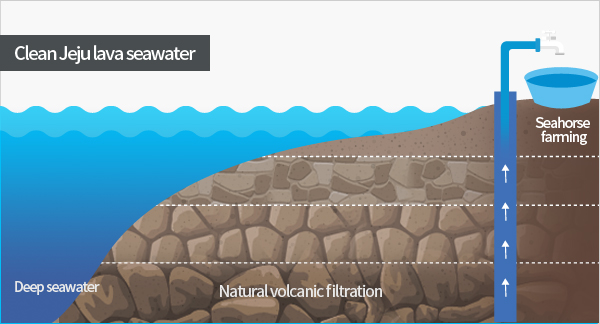
The seahorse produced by HAECHUNMA is
a classic representation of Jeju's specialized aquaculture industry.
A hygienic food source with absolutely no drugs, such as antibiotics etc.
which are harmful to the human body, used in the entire breeding process.
At HAECHUNMA CO. LTD, we comply with the standardization and content regarding seahorses so as to effectively bring out the efficacy of the seahorse. Through our carefully chosen member company system,
we affix the HAECHUNMA logo on all our products, as well as on products manufactured by our member companies. We strive to win the trust of consumers by maintaining product quality and proper distribution order.
A hygienic food source with absolutely no drugs, such as antibiotics etc.
which are harmful to the human body, used in the entire breeding process.
At HAECHUNMA CO. LTD, we comply with the standardization and content regarding seahorses so as to effectively bring out the efficacy of the seahorse. Through our carefully chosen member company system,
we affix the HAECHUNMA logo on all our products, as well as on products manufactured by our member companies. We strive to win the trust of consumers by maintaining product quality and proper distribution order.
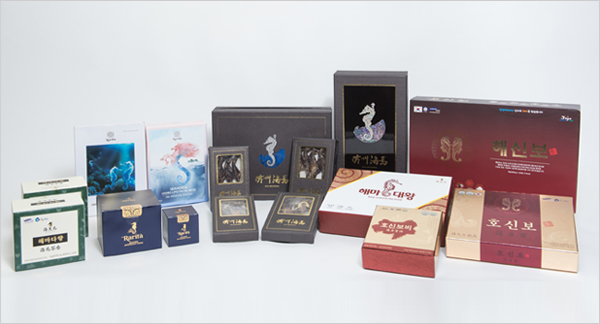
Consumers should check for the HAECHUNMA logo before purchasing our Jeju seahorses.
Seahorse related products that are currently for sale will include products directly manufactured by our company, as well as products manufactured by our member companies, such as dried seahorse package, fine dried seahorse powder, health functional foods, health supplements, cosmetics and seahorse tea. Seahorse extract, seahorse wine and seahorse accessories etc. are still under development with plans for release in the near future. In particular, please beware of similar seahorse products that do not contain the right amount of seahorse, leading to a reversal in efficacy.



-
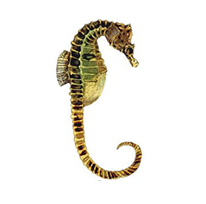 Big-belly seahorseOne of the largest seahorse species in the world with a length of up to 35 cm.
Big-belly seahorseOne of the largest seahorse species in the world with a length of up to 35 cm.
Its beautiful color and body give it a high ornamental value. Due to its body size which is the largest among seahorse species,
it is used in the development of health foods and new medicines. It is also recognized as a species with high added value
when aquaculture becomes industrialized in the future. -
 Barbour's seahorseRight from birth, the Barbour's seahorse is capable of sitting up straight by coiling its tail around a holdfast.
Barbour's seahorseRight from birth, the Barbour's seahorse is capable of sitting up straight by coiling its tail around a holdfast.
It coils its tail quickly and firmly around any holdfast that allows it to do so and it moves only when it wants to eat. Most of the time, it coils its tail and keeps a look out for movements in its surroundings.
The fry of the Kuda and Reidi seahorses move around in groups, either floating or swimming around for about 7 days after birth. Therefore, if they are not careful, they may breathe in air bubbles and take a horizontal posture when sleeping which will inhibit feeding and lead to death. This phenomenon is gradually becoming more severe.
However, as the Barbour's seahorse likes to keep its body clean while clinging onto a fixed holdfast, it has a relatively higher survival rate than species that do not coil their tails and go around sweeping unclean surfaces. To the delight of many people, the fry of the Barbour's seahorse clings onto its parent's spine when there are no other holdfasts and in some cases, a few seahorses will coil their tail around that of one another and move around in a group, attracting attention. Since 2010, HAECHUNMA has been developing and cultivating the Barbour's seahorse species and supplying it as an ornamental fish to domestic and overseas markets. -
 Hippocampus kudaProducing more larval fish as compared to other species, this species gives birth to over 1,000 fishes at a time.
Hippocampus kudaProducing more larval fish as compared to other species, this species gives birth to over 1,000 fishes at a time.
It is commonly found in Indonesia, the Philippines and other Southeast Asia regions. There are many colors of this species but
black is common in most cases. The larval fish floats around for about 7 days before it is able to use its tail to latch onto a holdfast.
It is relatively large in size for a seahorse with a length of up to 17 cm.
Since 2006, HAECHUNMA has been developing and cultivating this species and supplying it as an ornamental fish to domestic and overseas markets. -
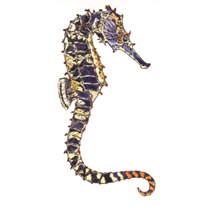 Tiger tail seahorseThe tail of this seahorse resembles that of a tiger's and hence its name. Since 2007, HAECHUNMA has been cultivating this species for commercialization and supplying it as an ornamental fish to domestic and overseas markets. This species is artificially bred in Vietnam for overseas export but the fishes produced have a relatively high rate of disease and antibiotics have been detected in Vietnamese imports at Hong Kong which led to the China Food and Drug Administration avoiding its use as a food ingredient. Since 2008, HAECHUNMA has been cultivating this species for commercialization and supplying it to domestic and overseas markets.
Tiger tail seahorseThe tail of this seahorse resembles that of a tiger's and hence its name. Since 2007, HAECHUNMA has been cultivating this species for commercialization and supplying it as an ornamental fish to domestic and overseas markets. This species is artificially bred in Vietnam for overseas export but the fishes produced have a relatively high rate of disease and antibiotics have been detected in Vietnamese imports at Hong Kong which led to the China Food and Drug Administration avoiding its use as a food ingredient. Since 2008, HAECHUNMA has been cultivating this species for commercialization and supplying it to domestic and overseas markets. -
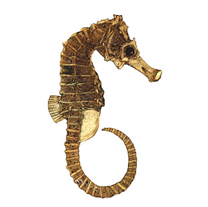 Hippocampus reidiThe Hippocampus reidi has a comparatively colorful body sporting colors like gold, orange and scarlet etc.
Hippocampus reidiThe Hippocampus reidi has a comparatively colorful body sporting colors like gold, orange and scarlet etc.
It has a size similar to that of the Kuda seahorse and is relatively easy to breed.
Since 2008, we have been developing and cultivating this species and supplying it as an ornamental fish to domestic and overseas markets.
HAECHUNMA seahorse farming is drawing interest
from many academic societies, specialists and the media.
from many academic societies, specialists and the media.
-
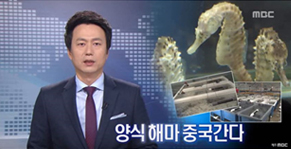 Jeju MBC: Farmed seahorses go to China
Jeju MBC: Farmed seahorses go to China -
 YTN: Growing interest in seahorses as food ingredient paves the way for seahorse farming
YTN: Growing interest in seahorses as food ingredient paves the way for seahorse farming -
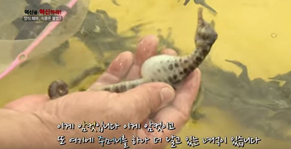 KTV: Is the use of seahorse illegal in food? - Innovating innovation
KTV: Is the use of seahorse illegal in food? - Innovating innovation -
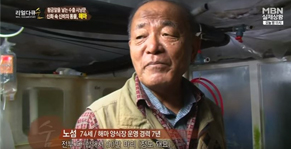 MBN Real Documentary:
MBN Real Documentary:
Export hunters bearing golden eggs


